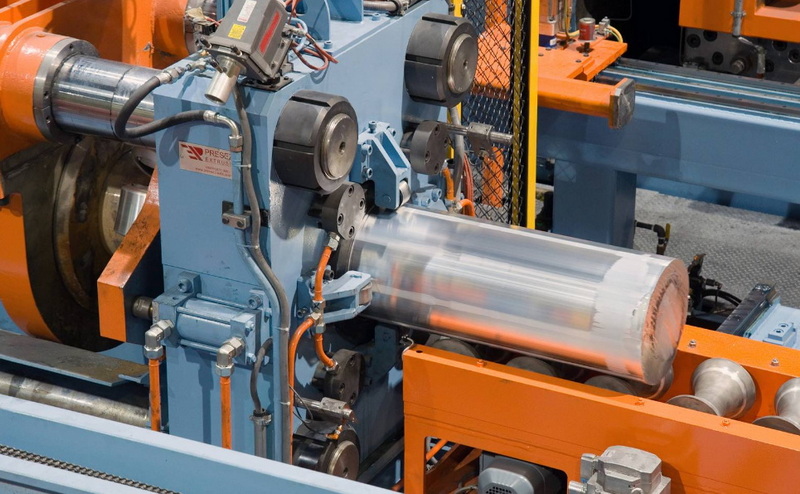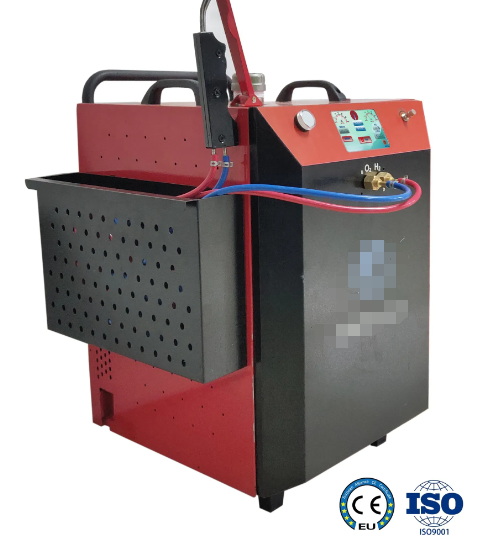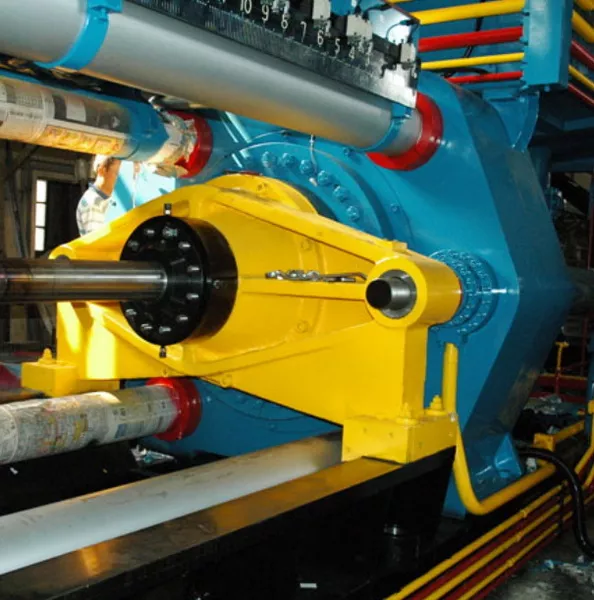Content Menu
● Introduction to Aluminum Extrusion
● Key Features of Mini Aluminum Extrusion Presses
● Applications of Mini Aluminum Extrusion Presses
● The Technology Behind Mini Aluminum Extrusion Presses
● Advantages of Using Mini Aluminum Extrusion Presses
● Challenges in Mini Aluminum Extrusion
● Future Trends in Mini Aluminum Extrusion Technology
● Conclusion
● FAQ
>> 1. What is the difference between a mini aluminum extrusion press and a standard press?
>> 2. How much pressure can a mini aluminum extrusion press exert?
>> 3. What materials can be extruded using these presses?
>> 4. Are mini aluminum extrusion presses suitable for large-scale production?
>> 5. How do I maintain a mini aluminum extrusion press?
Aluminum extrusion is a vital manufacturing process that shapes aluminum alloys into various profiles by pushing them through a die. This article explores the key features of a "mini aluminum extrusion press", its applications, advantages, and the technology behind it.

Introduction to Aluminum Extrusion
Aluminum extrusion involves heating aluminum billets and forcing them through a shaped die using a hydraulic press. The process allows for the creation of complex shapes and profiles, which are widely used in industries such as automotive, construction, and electronics. Mini aluminum extrusion presses are specifically designed for producing smaller profiles and components, making them ideal for niche applications.
Key Features of Mini Aluminum Extrusion Presses
1. Compact Size
- Mini aluminum extrusion presses are designed to occupy less space compared to traditional presses. This feature makes them suitable for small workshops or production facilities where space is limited. Their compact design does not compromise their operational capabilities, allowing manufacturers to maximize productivity in constrained environments.
2. High Pressure Capability
- Despite their size, mini presses can exert significant pressure (up to 5,000 tons), allowing them to extrude various aluminum alloys effectively. This capability is crucial for achieving precise shapes and dimensions, especially when working with high-strength alloys that require more force for successful extrusion.
3. Energy Efficiency
- These presses are engineered to be energy-efficient, consuming less power while maintaining high production rates. This efficiency not only reduces operational costs but also minimizes environmental impact. Many modern mini aluminum extrusion presses incorporate advanced technologies that optimize energy usage during the heating and extrusion processes.
4. User-Friendly Operation
- Mini aluminum extrusion presses often come with advanced control systems that simplify operation. Operators can easily adjust parameters such as temperature, pressure, and speed, enhancing productivity. Touchscreen interfaces and programmable logic controllers (PLCs) are common features that allow for intuitive operation and monitoring.
5. Versatility
- They can produce a wide range of profiles, from simple shapes to intricate designs. This versatility makes mini presses suitable for various applications in industries like automotive parts, consumer electronics, and architectural components. The ability to switch between different dies quickly enhances their adaptability to changing production needs.
6. Advanced Cooling Systems
- Many mini presses are equipped with efficient cooling systems that quickly cool the extruded profiles, ensuring dimensional accuracy and surface quality. Rapid cooling helps prevent warping and maintains the integrity of the extruded shapes, which is particularly important for precision applications.
7. Automated Features
- Automation in mini aluminum extrusion presses helps streamline production processes. Features such as automatic billet loading and unloading enhance efficiency and reduce labor costs. Automation also contributes to consistent quality by minimizing human error during operation.
8. Quality Control Mechanisms
- Integrated quality control systems monitor the extrusion process in real-time, ensuring that the produced profiles meet specified standards. These systems can include sensors that measure dimensions and surface quality, allowing for immediate adjustments if deviations occur.

Applications of Mini Aluminum Extrusion Presses
Mini aluminum extrusion presses are used in various industries due to their ability to produce specific components efficiently:
- Automotive Components
- Used for manufacturing lightweight parts such as brackets and frames that contribute to fuel efficiency. The automotive industry increasingly relies on aluminum due to its strength-to-weight ratio.
- Consumer Electronics
- Ideal for producing heat sinks and enclosures that require precision engineering. As electronic devices become smaller and more powerful, effective thermal management becomes critical.
- Architectural Elements
- Commonly used in creating window frames, door frames, and decorative elements. The aesthetic appeal of aluminum profiles makes them a popular choice in modern architecture.
- Medical Devices
- Essential for producing components that require high precision and cleanliness. The medical industry demands stringent quality standards, making mini aluminum extrusion presses suitable for this application.
- Aerospace Components
- Lightweight yet strong components produced by mini presses are increasingly used in aerospace applications where weight reduction is crucial for fuel efficiency.
The Technology Behind Mini Aluminum Extrusion Presses
The operation of a mini aluminum extrusion press involves several critical steps:
1. Billet Preparation
- Aluminum billets are cut to size and preheated to enhance malleability. Proper temperature control during heating is essential; typically, billets are heated to around 400-500 degrees Celsius depending on the alloy being extruded.
2. Lubrication
- A lubricant is applied to prevent sticking between the billet and the ram. Lubricants also help reduce friction during the extrusion process, which can improve surface finish on the final product.
3. Extrusion Process
- The heated billet is placed in the press, where a hydraulic ram pushes it through the die. The design of the die determines the shape of the extruded profile; thus, careful engineering is required to achieve desired specifications.
4. Cooling
- After exiting the die, the extruded material is rapidly cooled using air or water sprays. Effective cooling is vital to stabilize the profile's dimensions and prevent defects like warping or distortion.
5. Stretching and Cutting
- The cooled profiles are stretched to correct any warping before being cut to the desired length. This step ensures that all extrusions meet strict dimensional tolerances required by end-users.
Advantages of Using Mini Aluminum Extrusion Presses
- Reduced Production Costs: Their energy-efficient design leads to lower operational costs.
- Shorter Lead Times: Quick setup times allow manufacturers to respond rapidly to market demands.
- Enhanced Product Quality: Advanced technology ensures high-quality extrusions with minimal defects.
- Flexibility: Capable of switching between different profiles without extensive downtime.
- Lower Capital Investment: Compared to larger extrusion systems, mini presses require less initial investment while still providing robust production capabilities.
Challenges in Mini Aluminum Extrusion
While mini aluminum extrusion presses offer numerous advantages, they also face certain challenges:
1. Limited Production Volume: Due to their size constraints, they may not be suitable for very high-volume production runs compared to larger systems.
2. Material Limitations: Some mini presses may have restrictions on the types of alloys they can process effectively; thus, manufacturers must choose their materials wisely based on their specific applications.
3. Die Costs: Custom dies can be expensive; therefore, careful planning is needed to ensure that investments in dies yield sufficient returns through efficient production runs.
4. Maintenance Requirements: While generally reliable, regular maintenance is essential to keep mini presses operating at peak performance levels over time.
Future Trends in Mini Aluminum Extrusion Technology
The future of mini aluminum extrusion technology looks promising with several emerging trends:
1. Increased Automation: As Industry 4.0 continues to shape manufacturing processes, more mini aluminum extrusion presses will incorporate advanced automation technologies such as robotics and AI-driven analytics.
2. Sustainability Initiatives: There is a growing emphasis on sustainable manufacturing practices; therefore, future designs may focus on reducing waste during production and utilizing recycled materials more effectively.
3. Smart Manufacturing Integration: Integration with IoT (Internet of Things) technologies will enable real-time monitoring of equipment performance and predictive maintenance capabilities.
4. Advanced Materials Development: Research into new aluminum alloys or composite materials may expand the capabilities of mini presses beyond traditional applications.
5. Customization Options: As customer demands evolve towards more customized products, manufacturers may offer enhanced customization features within their mini aluminum extrusion solutions.
Conclusion
Mini aluminum extrusion presses play a crucial role in modern manufacturing by offering a compact solution for producing high-quality aluminum profiles efficiently. Their advanced features make them indispensable in various industries where precision and versatility are paramount.

FAQ
1. What is the difference between a mini aluminum extrusion press and a standard press?
A mini aluminum extrusion press is smaller in size but still capable of exerting significant pressure for producing detailed profiles, making it ideal for niche applications.
2. How much pressure can a mini aluminum extrusion press exert?
Mini aluminum extrusion presses can exert pressures up to 5,000 tons depending on the model and specifications.
3. What materials can be extruded using these presses?
While primarily designed for aluminum alloys, some mini presses can also handle other materials like copper or brass under specific conditions.
4. Are mini aluminum extrusion presses suitable for large-scale production?
Yes, they can be used for large-scale production but are more commonly employed for specialized or smaller batch runs due to their compact design.
5. How do I maintain a mini aluminum extrusion press?
Regular maintenance includes checking hydraulic fluid levels, cleaning lubrication systems, inspecting dies for wear, and ensuring cooling systems function properly.






















